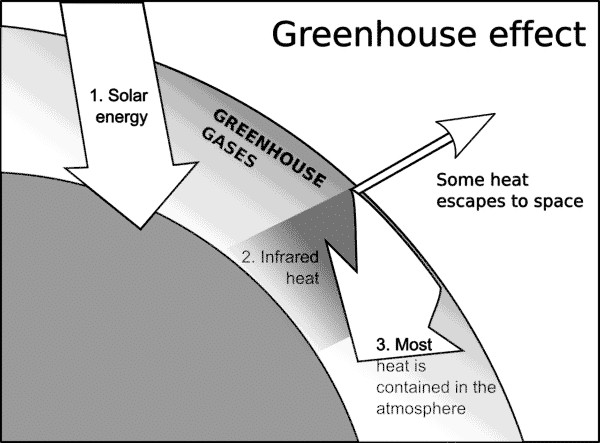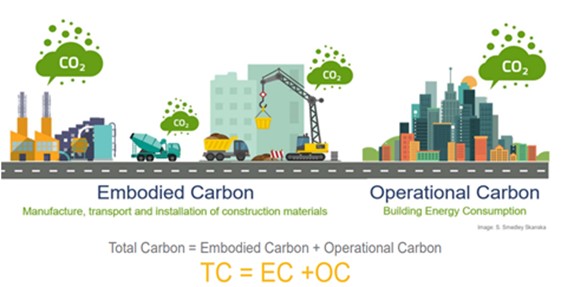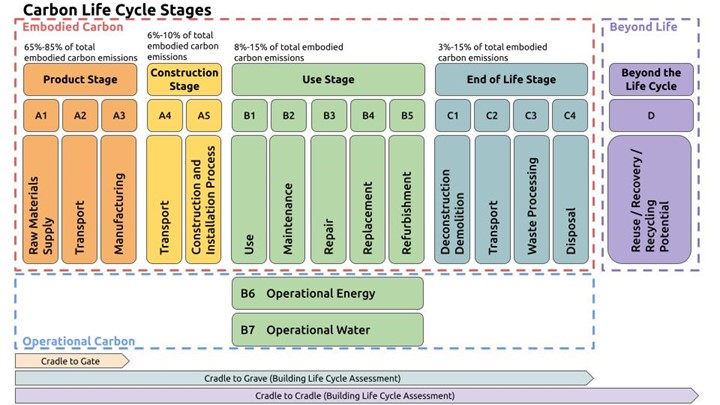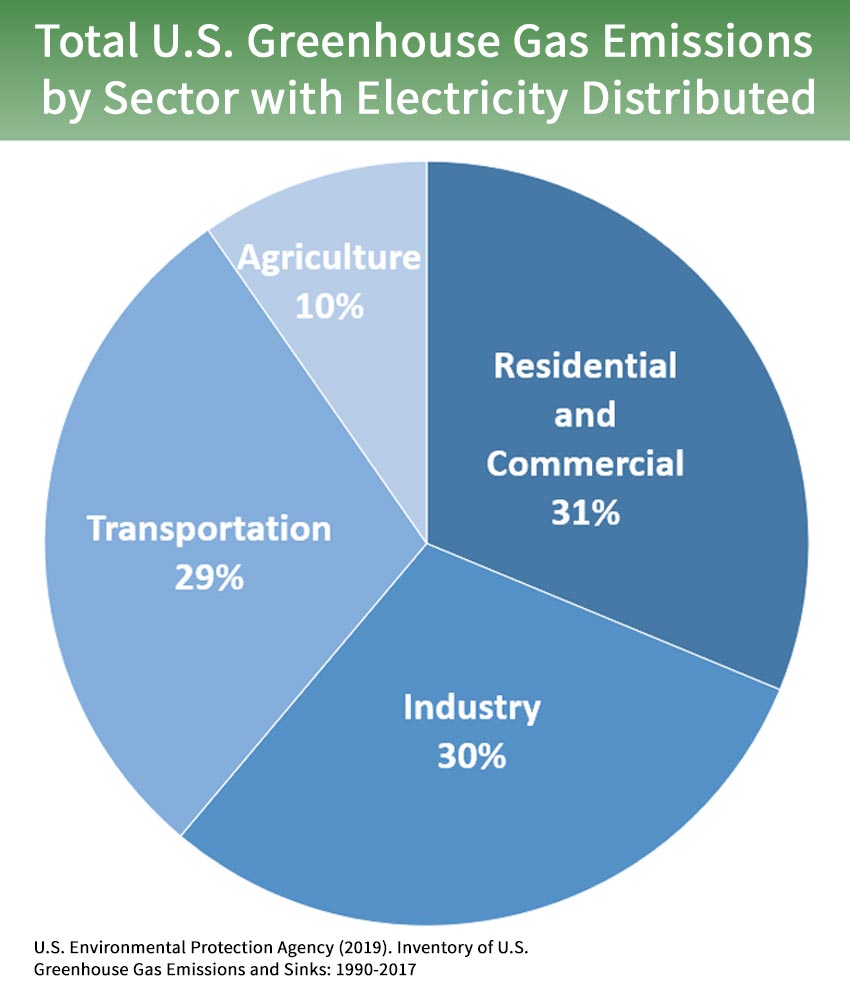Building Decarbonization
As the threat of climate change becomes more pressing, a range of strategies are evolving to equip the government and other entities to mitigate the intensity of climate change, while preparing for and adapting to the dangers it creates.
Climate change mitigation refers to measures to reduce the amount and speed of future climate change by reducing emissions of greenhouse gases or by increasing their removal from the atmosphere.1
Greenhouse gases (GHGs) trap heat in the atmosphere. They include Carbon Dioxide (CO2), Methane (CH4), Nitrous Oxide (N2O), Hydrofluorocarbons (HFCs), Perfluorocarbons (PFCs), Sulphur Hexafluoride (SF6) and Nitrogen Trifluoride (NF3). They are sometimes grouped together as "carbon" (see "What is the difference between 'Carbon', CO2, and CO2e?" below).
Building decarbonization is the process of reducing GHG emissions from buildings, including reduction of GHG emissions from the materials and products used in buildings (embodied carbon) as well as from building operations (operational carbon).
Similar, sometimes overlapping, terms may be used when referring to decarbonization, but they tend to point toward similar strategies that include energy efficiency, the use of renewable energy and other operational carbon pollution-free electricity (CFE) sources, the replacement of fossil fuel combustion equipment with electric models (electrification), and specification of low carbon materials. This module is focused on the decarbonization of federal buildings, through both embodied carbon and operational carbon reduction strategies.
Greenhouse Gas (GHG) Emissions
GHGs trap heat in the Earth's atmosphere through the greenhouse effect. At normal levels, this makes the planet livable. However, human activities, including the combustion of fossil fuels, the clearing of forests, and many other large scale actions, have greatly increased the emission of GHGs while reducing their natural absorption into forests and other carbon sinks, throwing our planetary climate out of balance. The resulting climate change is leading to many severe and disruptive impacts varying widely by area, including heat waves, drought, more intense storms, and sea level rise.

Sources of GHG Emissions
According to the U.S. Environmental Protection Agency (EPA)![]() , electric power generation produces 25% of total U.S. GHG emissions; most of that electricity is used by buildings and comes from burning fossil fuels, primarily coal and natural gas. Another 13% of total GHG emissions comes from the commercial and residential sector, mostly due to fossil fuel use in buildings, such as burning natural gas for space heating, hot water, and cooking. This means about a third of U.S. GHG emissions are attributable to building operations.
, electric power generation produces 25% of total U.S. GHG emissions; most of that electricity is used by buildings and comes from burning fossil fuels, primarily coal and natural gas. Another 13% of total GHG emissions comes from the commercial and residential sector, mostly due to fossil fuel use in buildings, such as burning natural gas for space heating, hot water, and cooking. This means about a third of U.S. GHG emissions are attributable to building operations.
The percentage of industrial GHG emissions shown in this chart includes the share of GHGs emitted to manufacture, transport and dispose of building materials.
A system of GHG accounting is used to categorize sources of GHGs emitted by organizations into three "scopes". This helps organize, direct, track, and report efforts to reduce GHGs:
- Scope 1 emissions are GHG emissions that come from sources that are controlled or owned by an organization (e.g., emissions associated with fuel combustion in boilers, furnaces, vehicles).3 Scope 1 also includes fugitive emissions from refrigerants.
- Scope 2 emissions are indirect GHG emissions associated with the purchase of electricity, steam, heat, or cooling.3
- Scope 3 emissions are indirect GHG emissions that are the result of activities from assets not owned or controlled by the reporting organization, which the organization indirectly affects through its value chain.4
GHG emissions from building operational energy use are primarily covered under Scopes 1 and 2, while emissions related to building material use fall under Scope 3.
Life Cycle Carbon / Total Carbon
Globally, buildings generate approximately 40% of annual GHG emissions,5 which may be split into two categories: operational carbon and embodied carbon.
- Embodied Carbon refers to the GHG emissions associated with the manufacturing, transportation, installation, maintenance, and disposal of construction materials.6 Embodied carbon is responsible for about 13% of global annual GHG emissions (from materials manufacturing as well as construction activities).
- Operational Carbon refers to the GHG emissions associated with energy used to operate a building.6 Operational carbon is responsible for 27% of global annual GHG emissions.
- The sum of embodied carbon and operational carbon is known as life cycle carbon or total carbon.

Whole Building Life Cycle Assessment (WBLCA)
Life Cycle Assessment (LCA) is a scientific process to assess and quantify environmental impacts in terms of severity, quality, and extent. A WBLCA looks at a building's environmental impacts from a GHG emissions perspective, or the GHG emissions a building produces throughout its life cycle.
The typical stages of a WBLCA are:
- Stage A: Material production and construction (embodied carbon)
- Stage B: Building operation and use (operational carbon) and maintenance (embodied carbon)
- Stage C: End of life (embodied carbon)
- Stage D: Circularity
 /reuse
/reuse
It should be noted that “Stage D” is often optional and can be considered to be beyond the boundary of a typical WBLCA. A WBLCA can be done for new construction, or for existing buildings undergoing a major renovation or fit-out project. It is the most accurate method to estimate the environmental impacts of a building. The graph below sheds more light on the stages and details of a WBLCA.

Life Cycle Cost Assessment (LCCA)
LCCA is a process for evaluating the total cost associated with facility/building ownership. It takes into consideration all costs of building, acquiring, owning, operating and disposing of buildings or building components. A LCCA is most useful when project alternatives have to be compared and when selecting the ones that maximize monetary savings - especially when those alternatives are similar in functionality and performance but differ in terms of upfront and ongoing costs. For example, a LCCA can help determine whether the selection of low embodied carbon materials or a high-efficiency HVAC system is cost effective. As a result, in some cases, initial cost may increase but the cost of operations and maintenance (O+M) will significantly decrease.
For more information, see SFTool’s Life Cycle Perspective pages.
Life-Cycle Cost Analysis (LCCA) | WBDG - Whole Building Design Guide![]()
Programs, Policies and Initiatives
Following are several programs, policies and initiatives to facilitate the decarbonization of buildings:
Federal Standards for Building Decarbonization
- Federal Building Performance Standard
 : The Federal Building Performance Standard requires agencies to cut energy use and electrify equipment and appliances to achieve zero Scope 1 emissions in 30% of the Federal government’s owned square footage by 2030.
: The Federal Building Performance Standard requires agencies to cut energy use and electrify equipment and appliances to achieve zero Scope 1 emissions in 30% of the Federal government’s owned square footage by 2030. - GSA P100 Facilities Standards for the Public Buildings Service
 (including section 1.9.2.9 “Decarbonization”): The Facilities Standards for the Public Buildings Service (P100) establishes design standards and performance criteria for the GSA Public Buildings Service. This document contains policy and technical criteria to be used in the programming, design, and documentation of GSA buildings.
(including section 1.9.2.9 “Decarbonization”): The Facilities Standards for the Public Buildings Service (P100) establishes design standards and performance criteria for the GSA Public Buildings Service. This document contains policy and technical criteria to be used in the programming, design, and documentation of GSA buildings. - Energy Independence and Security Act (2007)
 : EISA reinforces and extends energy reduction goals for federal agencies that originated in EO 13423
: EISA reinforces and extends energy reduction goals for federal agencies that originated in EO 13423 . Three key provisions are the Corporate Average Fuel Economy Standards, the Renewable Fuel Standard, and the appliance/lighting efficiency standards.
. Three key provisions are the Corporate Average Fuel Economy Standards, the Renewable Fuel Standard, and the appliance/lighting efficiency standards. - Energy Policy Act (2005)
 : The Energy Policy Act addresses energy production in the United States, including: energy efficiency; renewable energy; oil and gas; coal; Tribal energy; nuclear matters and security; vehicles and motor fuels, including ethanol; hydrogen; electricity; energy tax incentives; hydropower and geothermal energy; and climate change technology.
: The Energy Policy Act addresses energy production in the United States, including: energy efficiency; renewable energy; oil and gas; coal; Tribal energy; nuclear matters and security; vehicles and motor fuels, including ethanol; hydrogen; electricity; energy tax incentives; hydropower and geothermal energy; and climate change technology.
Other Initiatives/Commitments
- SE 2050 Commitment
 : The mission of the SE 2050 Commitment is to support the SE 2050 Challenge and transform the practice of structural engineering in a way that is holistic, firm-wide, project-based, and data-driven. By prioritizing reduction of embodied carbon, through the use of less and/or less impactful structural materials, participating firms can more easily work toward net zero embodied carbon structural systems by 2050.
: The mission of the SE 2050 Commitment is to support the SE 2050 Challenge and transform the practice of structural engineering in a way that is holistic, firm-wide, project-based, and data-driven. By prioritizing reduction of embodied carbon, through the use of less and/or less impactful structural materials, participating firms can more easily work toward net zero embodied carbon structural systems by 2050. - 2030 Challenge
 : In 2005, Architecture 2030 issued this initiative which comprised incremental carbon reduction goals over a 25-year timeline that were consistent with those called for by the global scientific community at the time. Meeting the targets would mean that all new buildings and major renovations would be zero carbon by 2030.
: In 2005, Architecture 2030 issued this initiative which comprised incremental carbon reduction goals over a 25-year timeline that were consistent with those called for by the global scientific community at the time. Meeting the targets would mean that all new buildings and major renovations would be zero carbon by 2030. - AIA 2030 Commitment
 : The AIA 2030 Commitment is an actionable climate strategy that provides a set of standards and goals for reaching net zero emissions in the built environment.
: The AIA 2030 Commitment is an actionable climate strategy that provides a set of standards and goals for reaching net zero emissions in the built environment. - MEP 2040 Challenge
 : To address the impact of the built environment on climate change, systems engineers have a critical role to play in both operational and embodied carbon. While operational carbon has been targeted with energy efficiency initiatives for some time, setting embodied carbon targets for systems is quite new.
: To address the impact of the built environment on climate change, systems engineers have a critical role to play in both operational and embodied carbon. While operational carbon has been targeted with energy efficiency initiatives for some time, setting embodied carbon targets for systems is quite new. - Carbon Neutral Cities Alliance
 : The Carbon Neutral Cities Alliance (CNCA) is a collaboration of leading global cities working to achieve carbon neutrality in the next 10-20 years – the most aggressive GHG reduction targets undertaken anywhere by any city.
: The Carbon Neutral Cities Alliance (CNCA) is a collaboration of leading global cities working to achieve carbon neutrality in the next 10-20 years – the most aggressive GHG reduction targets undertaken anywhere by any city. - Better Buildings Challenge/Better Climate Challenge
 : Better Buildings
: Better Buildings is an initiative of the DOE designed to improve the lives of the American people by driving leadership in energy innovation. Through Better Buildings, DOE partners with leaders in the public and private sectors to make the nation’s homes, commercial buildings, and industrial plants more energy-efficient by accelerating investment and sharing successful best practices. Through the Better Climate Challenge, organizations partner with DOE to reduce portfolio-wide GHG emissions (scope 1 and 2) by at least 50% within 10 years. DOE provides technical assistance and opportunities to learn and share actionable best practices for carbon reduction, including Emissions Reduction Planning: A Framework
is an initiative of the DOE designed to improve the lives of the American people by driving leadership in energy innovation. Through Better Buildings, DOE partners with leaders in the public and private sectors to make the nation’s homes, commercial buildings, and industrial plants more energy-efficient by accelerating investment and sharing successful best practices. Through the Better Climate Challenge, organizations partner with DOE to reduce portfolio-wide GHG emissions (scope 1 and 2) by at least 50% within 10 years. DOE provides technical assistance and opportunities to learn and share actionable best practices for carbon reduction, including Emissions Reduction Planning: A Framework.
Embodied Carbon Policy Tracker
The Carbon Leadership Forum’s Embodied Carbon Policy Toolkit![]() provides information about existing and proposed embodied carbon policies at the local, state or provincial, and national level around the world.
provides information about existing and proposed embodied carbon policies at the local, state or provincial, and national level around the world.
Acknowledgements
- GSA Office of Federal High-Performance Buildings
- GSA Public Buildings Service (PBS) Central Office
- GSA PBS Region 8
- Department of Energy Federal Energy Management Program
- Lawrence Berkeley National Laboratory
- American Wood Council
- EHDD
- SOM
- The Nesler Group
1. GlobalChange.gov | Reducing Risks Through Emissions Mitigation - Fourth National Climate Assessment

